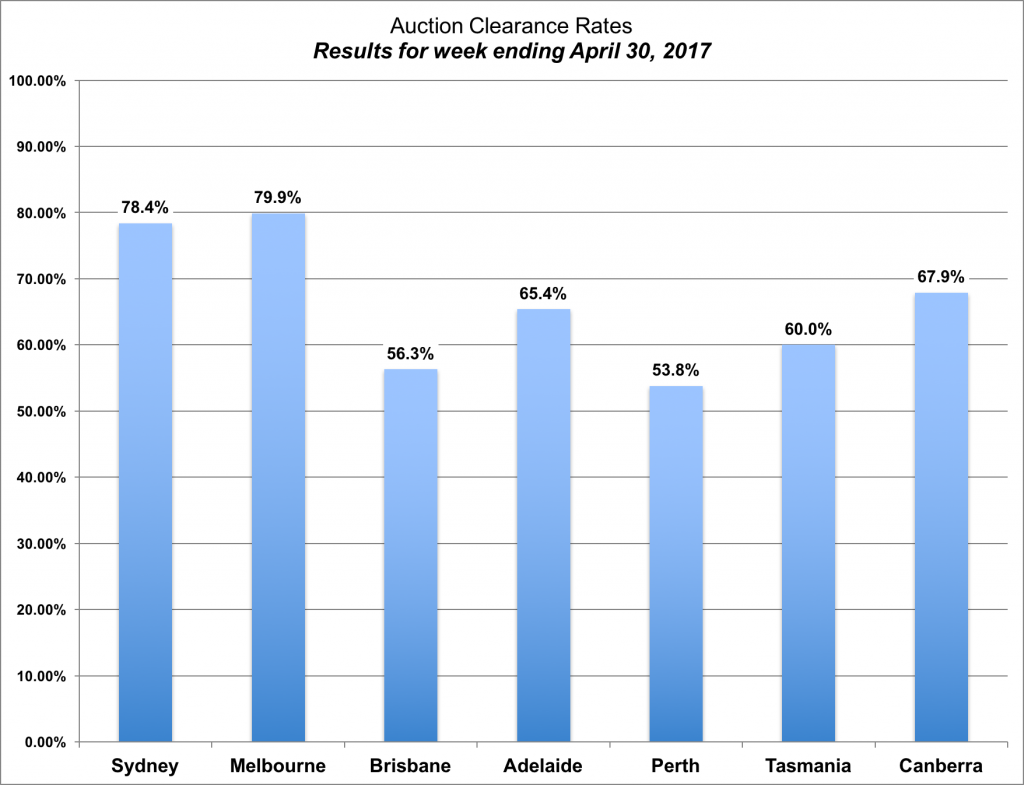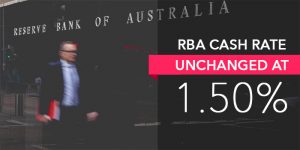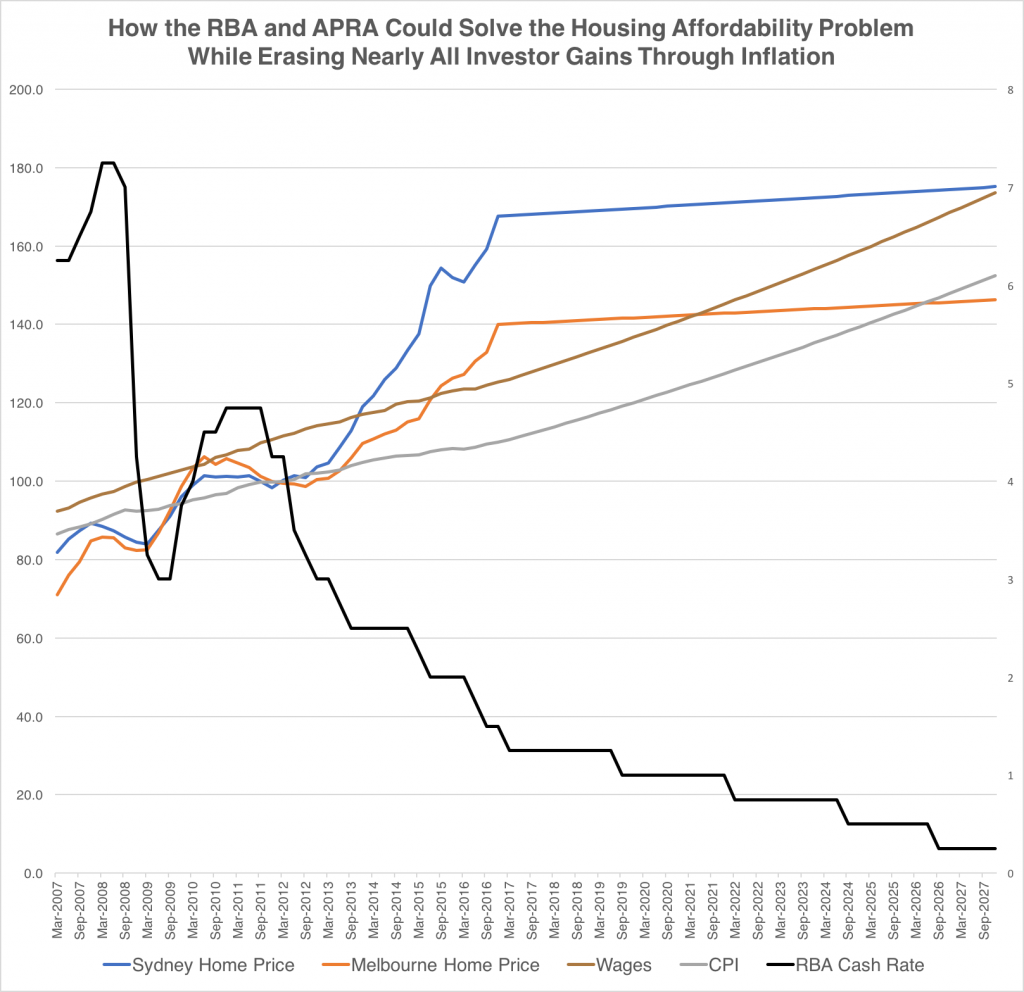How Regulators Plan to Deflate
the Speculator Wealth Bubble
Are you holding real estate long term because you’re confident house prices won’t be coming down? Allow me to challenge you with one possible scenario where you could be right, but still, all your real estate wealth gains of the last few years slowly dissolve.
First, to set the context, here are the latest auction results as reported by CoreLogic.
Auction Results for week ending April 30, 2017.

Demand appears to have strengthened this week with the combined capital city preliminary clearance rate jumping to 76.9 percent. That’s a significant rise over the previous weekend when buyers posted the first below-70 clearance rate in months. This week’s strengthening in demand is highlighted by a considerable rise in auction volume, up from 1,751 last week to 2,347 this week.
Supply remains relatively suppressed. This time last year volume was higher at 2,675.
The City Stats
In Sydney, vendors offered up 804 properties at auction and buyers lifted the preliminary clearance rate to 78.4 percent. That’s a sizeable increase in demand from last week, when 72.4 percent of 596 auctions were successful. Over the same weekend last year, 818 homes were taken to auction and the clearance rate was 71.7 percent.
In Melbourne, the preliminary clearance rate rose to 79.9 percent, up from 75.2 percent last week. The auction volume was also substantially higher at 1,232, up from 828 last week. Supply remained short of last year when 1,404 auctions were held and the clearance rate was 73.5 percent.
No other capital cities cleared above 70 percent this week.
The Graph

The Preliminary Numbers
Sydney | Melbourne | Brisbane | Adelaide | Perth | Tasmania | Canberra | |
Clearance Rate | 78.4% | 79.9% | 56.3% | 65.4% | 53.8% | 60.0% | 67.9% |
Auctions | 804 | 1232 | 124 | 82 | 33 | 10 | 62 |
The Analysis
As I reported last week, CoreLogic’s daily home value index data reveals that the Sydney market may have peaked on April 11th, and the Melbourne market may have likewise topped out one week later, on April 18th. Since then, prices have fallen on all but five days in Sydney and all but three days in Melbourne.
This past weekend was a mini “super Saturday” of sorts as agents pulled forward as many auctions as possible into the final weekend of April. May is a psychological turning point in the property market, so agents would have been marketing intensively toward the weekend, especially considering the rumblings in the media that the glory days of the housing market are behind us.
Expect volume to drop considerably next week. Around 500 fewer auctions are scheduled for Melbourne and nearly 300 fewer for Sydney.
It’s important to note that these preliminary clearance rate figures may be adjusted down once the final numbers are posted on Thursday. It’s not uncommon for clearance rates to drop after all the data is collected.
Agents often like to paint an initially rosy picture for the auction results headlines published on a Monday, then reveal the cold, hard truth later in the week. Agents would especially be motivated to inflate results after recent sombre reports of falling prices.
Pay special attention to the final numbers released by CoreLogic on Thursday. I’ll aim to come back and leave a comment on this post with those updated figures and some commentary once they are released.
What It Means For Investors
 The RBA met today and decided for the ninth consecutive month to leave the cash rate on hold at 1.50 percent. If the Sydney and Melbourne housing markets weren’t so hot, and household debt levels already excessive, they may have decided otherwise.
The RBA met today and decided for the ninth consecutive month to leave the cash rate on hold at 1.50 percent. If the Sydney and Melbourne housing markets weren’t so hot, and household debt levels already excessive, they may have decided otherwise.
Australia’s headline inflation in the March quarter came in below economist expectations at a meagre 0.5 percent. That brought the figure to only 2.1 percent for the previous year, barely within the RBA’s target band of 2 to 3 percent. That’s a weak result considering how cheap credit is, and it’s hard to find a reason to expect growth to pick up anytime soon, apart from more rate cuts. The jobs market is stagnant, underemployment is trending up and the latest retail sales data has been lacklustre.
Just because the RBA didn’t cut today doesn’t mean future rate cuts are out of the question. The latest economic data seems to warrant a drop in the cash rate to 1.25 percent and perhaps even again to 1.00 percent. The only way I see rates staying put is if the Fed follows through on its plans to increase borrowing costs, which I’m sceptical of.
For now, the RBA will need to sit tight, hoping Janet Yellen will keep her promises and APRA can take the wind out of the sails of property speculators. APRA Chairman Wayne Byres seems committed to doing his part. He said last week to expect interest rates on investor and interest-only home loans to keep going up as banks continue to steer consumers away from risky loans.
Make no mistake, our regulators will do everything they possibly can to get what they want – flat property prices and rising inflation. In theory, as long as nothing unforeseen happens overseas, all it will take is for the RBA to keep lowering rates while APRA keeps credit flowing away from the housing market. A little help from Canberra on investor tax concessions wouldn’t hurt either.
Speaking of the unforeseen, Business Insider posted an article worth reading that details four ways the housing bubble could burst. Here’s a summary:
- The RBA hikes rates to avoid excessive inflation as the U.S. and European central bankers lift their rates. This leads to investor mortgage stress, defaults and forced sales.
- Underemployment and unemployment rise, leading to reduced spending in the economy, mortgage stress, and forced sales.
- Government intervention continues to create market distortions, causing home prices to rise even further. The RBA is forced to raise rates to burst the bubble.
- A political, military or economic crisis overseas causes international credit markets to tighten up and interest rates to rise, leading to mortgage stress and forced sales.
As for number one, I don’t see the Fed or ECB raising rates significantly, so neither will the RBA. Number two is unlikely, as central bankers tend to lower rates or print money to prevent deflation. Number three is a possibility, but it’s unlikely considering APRA’s power to further tighten the screws on banks. I see number four as the greatest risk.
But I’ll add a fifth possibility, one which isn’t so much a bursting of house prices, but a deflating of investor profits:
5. Home price growth flattens out while inflation erodes real wealth gains.
As you can see in the chart below, if the RBA could get inflation to average out to around 3 percent per year for the next ten years while APRA does its part to keep home prices relatively flat, the housing affordability problem would be solved, assuming wages grew at the same rate as consumer prices.

Of course, the RBA would need to be willing to keep dropping rates, while APRA would need to counteract by forcing banks to keep mortgage rates higher. This is what I suspect our regulators are ultimately aiming for as it could provide the softest landing for our economy. Assuming they could pull it off, their next challenge would be normalising interest rates in a cheap-credit-addicted economy.
The moral of the story is two-fold for investors:
- Don’t expect any future RBA rate cuts to translate into lower borrowing costs.
- Unless your investment assets are growing faster than inflation, you’re not building real wealth. Equally, if inflation begins to outpace growth in your investment assets, you are losing real wealth.
What do you see as the most likely future scenario and how is that impacting your property investing strategy?
Take a moment to leave a comment below.
—
The auction results listed here are based on initial reporting by CoreLogic.
For the historical data of weekly auction clearance rates, click here.
Comments
Got something to say? Post a comment...
You must be logged in to post a comment.





According to CoreLogic’s final auction numbers released today, Melbourne’s preliminary auction clearance rate wasn’t far off the mark, with the final reading falling about two basis points. Sydney’s auction clearance rate, on the other hand, dropped four basis points once all data was collected. This seems to fit the pattern of agents inflating preliminary results for the sake of optimistic headlines, as described in the article above. That said, results in the mid to high 70’s seem optimistic enough and show that demand remains quite strong, despite initial efforts from APRA to cool the market.